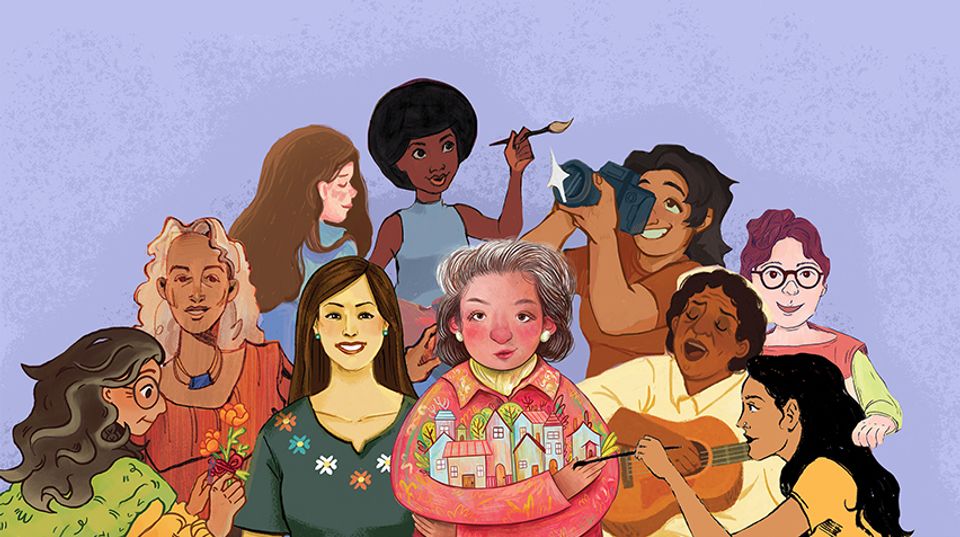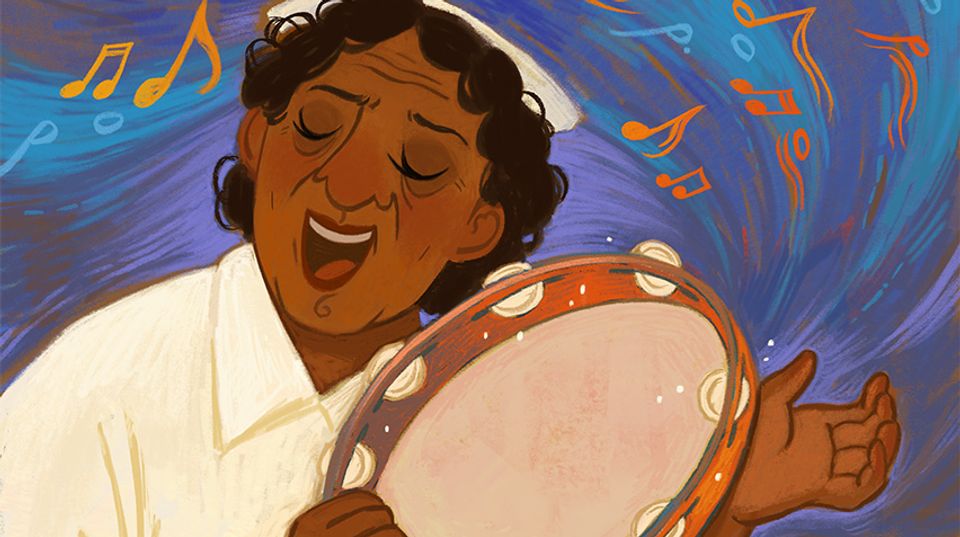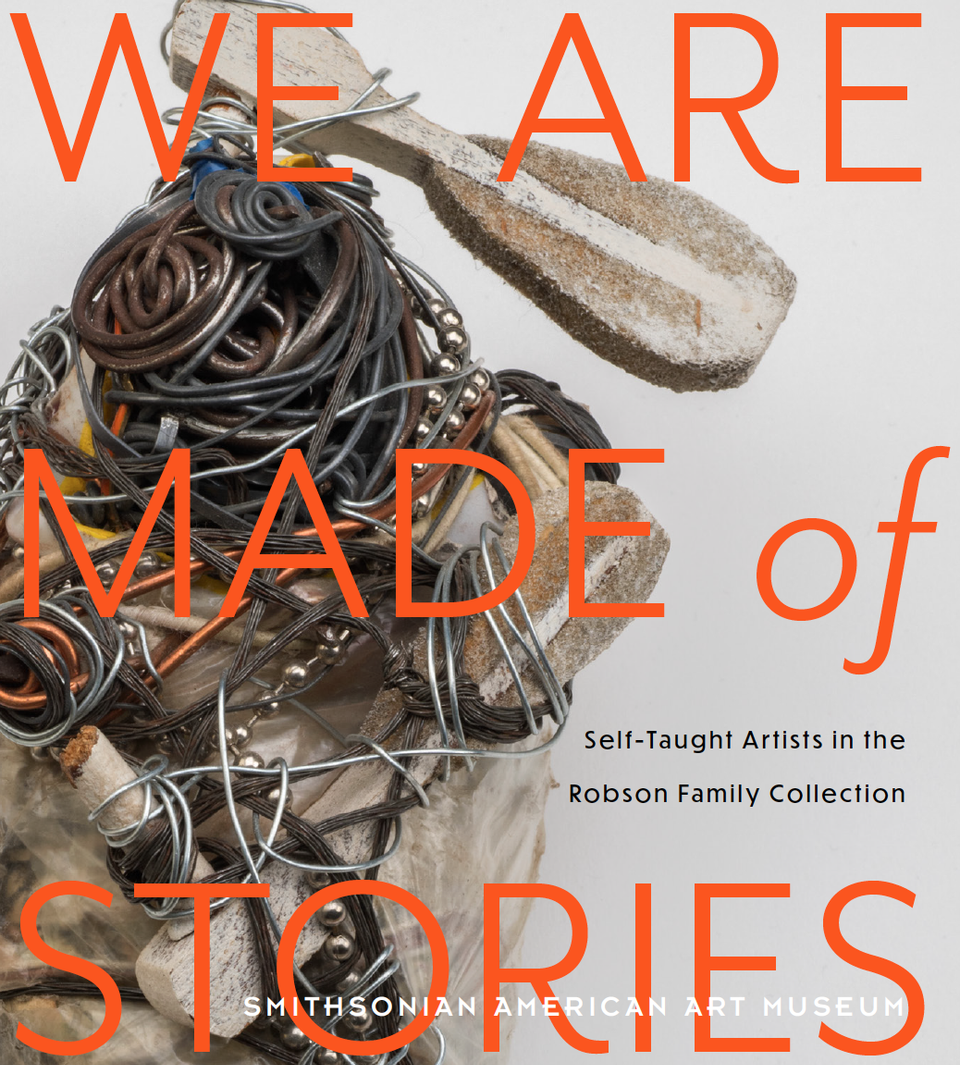Artist Biography
"I guess my paintings spread the word; they represent something. They get me a living, of course, and help out the mission here. . . . I am a missionary of Christ before I'm an artist. Give all the fame to some other artist. I work for the Lord. Now don't forget to give Him credit."—"Sister Gertrude," The New Orleans States-Item, 1 Sept. 1973.
A former street preacher who became an artist, poet, and musician, Gertrude Morgan painted biblical themes to illustrate her gospel teachings. Born on April 7, 1900, in Lafayette, Alabama, Morgan moved to New Orleans during the late 1930s following a separation from her "earthly" husband. In New Orleans she became affiliated with the Holiness and Sanctified denomination, a loosely organized religious group that praised God through music and dancing. Morgan adopted the title "Sister" during the early 1940s when she became associated with two other street missionaries, Mother Margaret Parker and Sister Cora Williams. As a result of contributions and offerings from their combined street preaching, the three women purchased land, built a chapel, and opened a child-care center in the Gentilly section of New Orleans. For more than twelve years they furnished food and shelter to orphans, runaways, and children of working mothers. The center was destroyed by a hurricane in 1965. After the center closed, Morgan moved to St. Bernard Parish and became the nurse-companion of an elderly woman who owned the tiny house that later became Morgan's Everlasting Gospel Mission.
In 1965 Morgan had a vision of the Holy Ghost that revealed she was the chosen bride of God. After that, Morgan wore only white to symbolize her spiritual marriage—a crisp nurse's uniform, nurse's oxfords, white stockings, and a small peaked cap perched on her mixed gray hair.
Sister Gertrude Morgan worked with any available materials at hand when the "spirit" moved her—cardboard, window shades, styrofoam trays, plastic utensils, jelly glasses, blocks of wood, lamp shades, picture frames, her guitar case, and even the back of a "For Sale" sign placed in her yard by a real estate agent. She freely intermingled acrylics, poster paint, watercolors, wax crayons, and ball-point pen. An integral part of her composition, Morgan's calligraphy was used to convey important messages or to denote specific scriptures that she illustrated. Though as a child she drew designs on the ground with sticks, and later drew pencil designs and painted on paper, she did not begin to paint seriously until 1956.
The majority of Morgan's paintings are religious. She painted scores ofself-portraits, depicting her before and after her mystical marriage, wearing black and white, respectively. God is always depicted as white in Sister Gertrude's paintings, and she is represented as an African American. Morgan always signed but never dated her works, and used the designations "Jesus" and "God" interchangeably in her paintings. Her prodigious output may be divided into early, middle, and late periods as dictated by style, medium, and content.
After 1970 Morgan painted scenes almost exclusively inspired by the Bookof Revelation, which deals with the Second Coming of Christ. Her favorite theme depicts the New Jerusalem as described in Revelation: And, I, John, saw the holy city, New Jerusalem, coming down from God out of heaven, prepared as a bride adorned for her husband." Morgan's "New Jerusalem" paintings invariably include a large multistory building shown in cross section to reveal empty chambers, Christ preparing for His marriage to Sister Gertrude, the wedding ceremony, and finally the bridal couple relaxing on a terrace. Morgan also completed a group of large frieze-like, narrative paintings that she called "charters" and illustrated with consecutive chapters from the Book of Revelation.
Sister Gertrude also created a group of hand-made, painted fans that she gave to friends and handed out during sessions in her all-white Prayer Room. The fans were made of oblong strips of cardboard, stitched together and painted on both sides. Visitors to Sister Gertrude's tiny mission were ushered into her Prayer Room where she alternately preached and sang her prayer songs.
Gertrude Morgan's paintings and painted objects express her vivid imagination, innate sense of color and composition, and fervent religiosity. Like many self-taught artists, whether white or black, Sister Gertrude Morgan's fundamentalist and pentecostal beliefs were central to her art. During the summer of 1980 Sister Gertrude died peacefully in her sleep. She left no known survivors.
Regenia A. Perry Free within Ourselves: African-American Artists in the Collection of the National Museum of American Art (Washington, D.C.: National Museum of American Art in Association with Pomegranate Art Books, 1992)


















